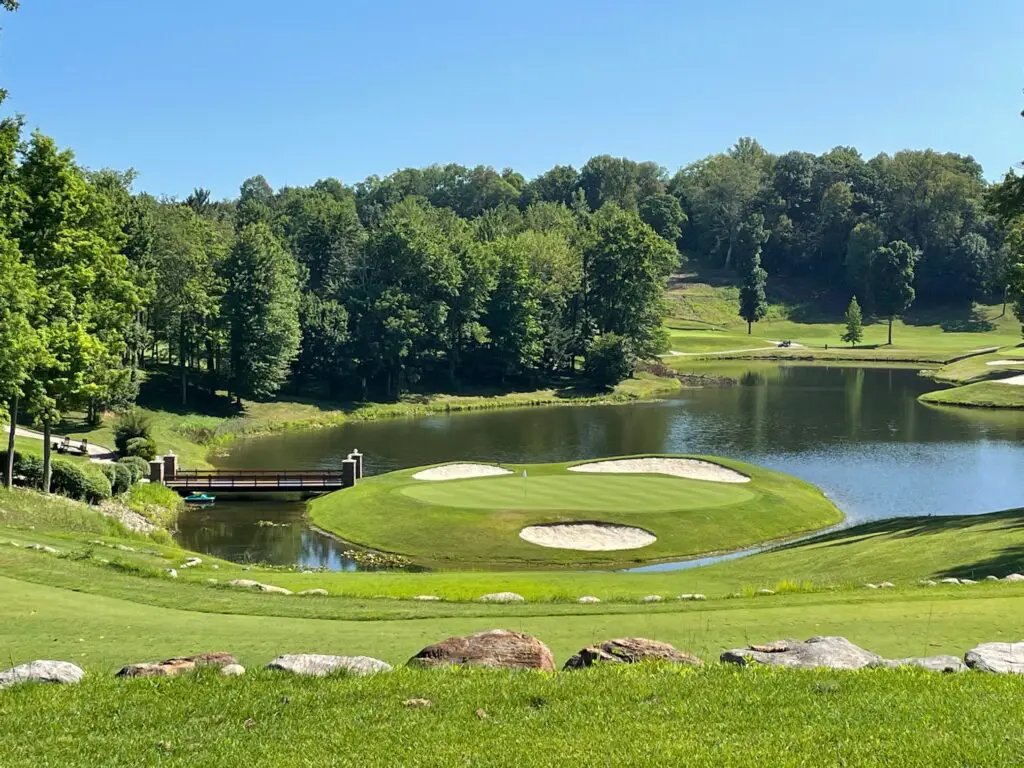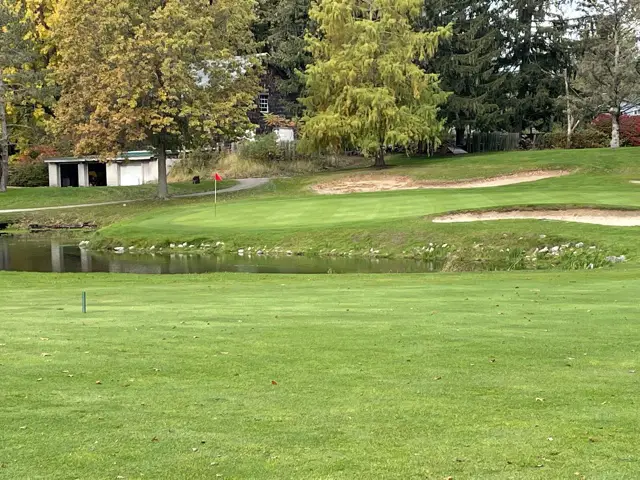I am always tweaking my bag, trying to get the right setup to provide for the lowest possible score.
Golfers have plenty of options when it comes to the wedges, but this can be confusing at times. I come across many amateurs with a poor setup of wedges in their bag.
So, we are here to help you and answer the common questions golfers inquire when it comes to the 58 vs 60 wedge. I had four different level golfers hit shots with both clubs: a low handicap, a mid handicap, a high handicap and a senior golfer.
The goal was to answer the following:
- How far should you hit a 58 degree wedge?
- How far should you hit a 60 degree wedge?
- Is there a major difference between the 58 and 60 degree wedge?
- Should you use a 58 or 60 degree wedge?
- What is a 58 degree wedge used for?
- What is a 60 degree wedge used for?
The process included:
- Each golfer hitting 5 shots at 100%, 90%, 80% (Goal 1 Above)
- Calculating the average carry distance (see chart below)
- Analyzing average club distance by age

How Far Should You Hit a 58 Degree Wedge?
On average, golfers will hit their 58 degree wedge 86 yards, but there will be a range between 74 and 93 yards depending on age and ability level. With a 58 degree wedge there are many shots hit at less than 100% which will impact the average distance.
58 Degree Wedge: 5 Shot Average at Different Percent Swings
| Golfer | 100% | 90% | 80% |
| Low Handicap | 92 Yards | 82 yards | 73 Yards |
| Mid Handicap | 78 Yards | 69 Yards | 59 Yards |
| High Handicap | 76 Yards | 68 Yards | 59 Yards |
| Senior Golfer | 60 Yards | 53 Yards | 45 Yards |
How Far Golfers Hit Their 58 Degree Wedge by Age:
| Age Range (10 Year Gaps) | 58 Wedge Distance Average |
| 10-19 | 91 |
| 20-29 | 93 |
| 30-39 | 91 |
| 40-49 | 88 |
| 50-59 | 84 |
| 60-69 | 79 |
| 70 | 74 |
| Average 10-70 | 86 |
How Far Should You Hit a 60 Degree Wedge?
On average, golfers will hit their 60 degree wedge 81 yards, but there will be a range between 70 and 88 yards depending on age and ability level. With a 60 degree wedge there are many shots hit at less than 100% which will impact the average distance.
60 Degree Wedge: 5 Shot Average at Difference Percent Swings
| Golfer | 100% | 90% | 80% |
| Low Handicap | 88 Yards | 78 yards | 67 Yards |
| Mid Handicap | 74 Yards | 65 Yards | 54 Yards |
| High Handicap | 72 Yards | 63 Yards | 58 Yards |
| Senior Golfer | 56 Yards | 48 Yards | 43 Yards |
How Far Golfers Hit Their 60 Degree Wedge by Age
| Age Range (10 Year Gaps) | 60 Wedge Distance Average |
| 10-19 | 86 |
| 20-29 | 88 |
| 30-39 | 86 |
| 40-49 | 83 |
| 50-59 | 79 |
| 60-69 | 75 |
| 70 | 70 |
| Average 10-70 | 81 |

Is There A Major Difference Between a 58 and 60 Degree Wedge?
No, with only a 2 degree difference, the difference in yardage is minimal at an average of 4 yards. If you can deal with 4 yards of less difference, I would recommend the 60 degree wedge to provide extra loft with chipping around the greens. Today’s greens are often firm and fast and the extra loft can really help out.
Diving further into this topic, golfers have to consider their total setup and how they utilize the 14 clubs in their bag. There are several different wedge setup that are most common:
Most Common Wedge Setup #1:
- 48 Degree Wedge (Pitching Wedge)
- 54 Degree Wedge (Sand Wedge)
- 60 Degree Wedge (Lob Wedge)
Most Common Wedge Setup #2:
- 48 Degree Wedge (Pitching Wedge)
- 52 Degree Wedge (Gap Wedge
- 56 Degree Wedge (Sand Wedge)
- 60 Degree Wedge (Lob Wedge)
Most Common Wedge Setup #3:
- 48 Degree Wedge (Pitching Wedge)
- 52 Degree Wedge (Gap Wedge
- 58 Degree Wedge (Lob Wedge)
Should You Use A 58 or 60 Degree Wedge?
If you play courses with a great deal of undulation and firm greens, I would recommend the 60 degree wedge for the extra loft when chipping around the greens. Of course, you will want to ensure you do not have any major yardage gaps.
The key here is to ensure you have a comfortable shot with different distances inside of 100 yards. I would recommend creating a shot chart with your wedges that looks similar to the one below that I created with my launch monitor.
| Club | Carry Distance (100%) | 90% | 80% | 70% |
| Pitching Wedge | 128 | 118 | 108 | 98 |
| Approach Wedge | 118 | 110 | 102 | 96 |
| SW Club (54) | 105 | 97 | 91 | 85 |
| LW Club (60) | 85 | 76 | 68 | 60 |

What is a 58 degree wedge used for?
The golfer will hit shots anywhere from right around the green up to 90 yards depending on swing speed and ability level. It is a versatile club that becomes an important part of scoring once a golfer gets inside of 100 yards.
What is a 60 degree wedge used for?
The golfer will hit shots anywhere from right around the green up to 85 yards depending on swing speed and ability level. It is a versatile club that becomes an important part of scoring once a golfer gets inside of 100 yards.
Both clubs are vital to the scoring and golfers really need to look at the big picture and create a distance chart like the one above to ensure they do not have any major gaps in their game. For a period of time I played with a 48, 56 and 60 degree wedge. Eventually, due to a large gap between the 48 and 56, I replaced the 56 with a 54 degree wedge.
58 vs 60 Wedge: Final Thoughts
Most golfers are going to default to the 60 degree wedge, just make sure you do not have too big of a gap and leave yourself struggling from a certain 10-15 gap somewhere inside of 100 yards. If you are someone that is good at hitting 60% or 70% you can have a larger gap between wedges, but if you struggle with these shots you will only want a 4 degree difference.
Bottom Line:
- Good at half shots = 3 Wedges
- Struggle with half shots = 4 wedges
